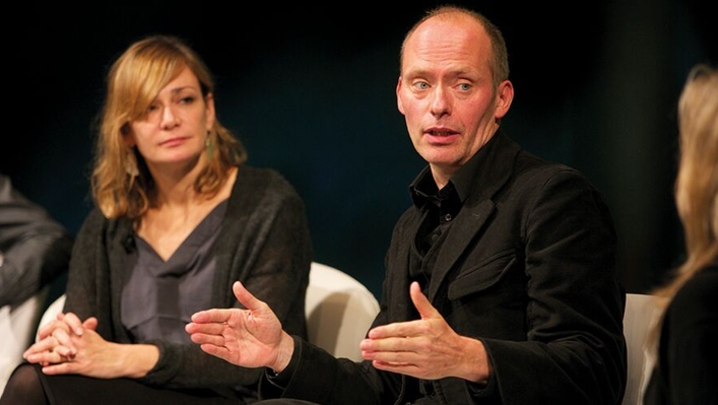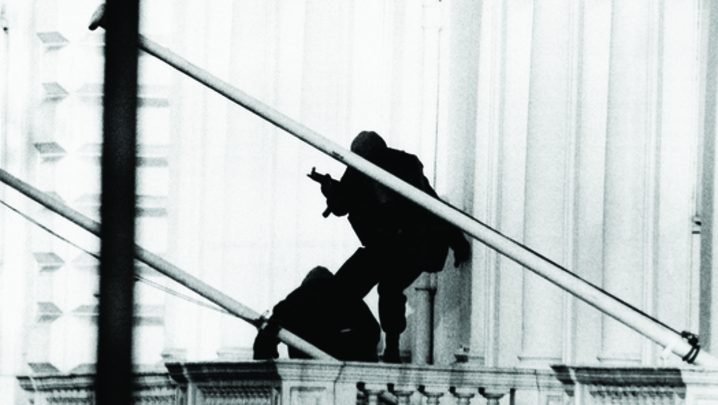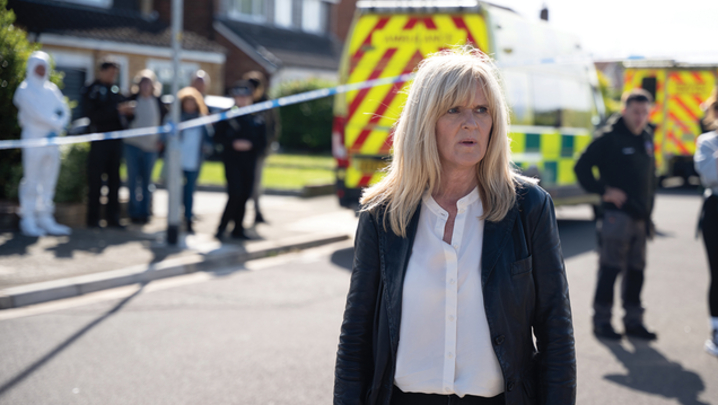Matthew Bell hears how Geordie Shore, a flagship show for MTV since 2011, reflects the vibrancy of the North East.
The tale of boozy, sexed-up Geordies – “I’m fit, I’m flirty and I’ve got double Fs”, as one of the cast memorably declared – has come a long way in a short time.
Geordie Shore – based on the US series Jersey Shore – first hit UK screens in May 2011 and has racked up 163 episodes. The MTV reality show has also sold abroad to more than 80 territories.
On the eve of its 18th series, Geordie Shore was put under the microscope at an RTS North East and the Border “Anatomy of a hit” event in mid-October.
Graeme Thompson, a former Chair of the centre, discussed the DNA of the show with the executives who make and commission it. The session formed part of Digital Cities North East, a festival of events for the creative industries in the region.
“Jersey Shore was a massive hit worldwide for MTV US,” said Craig Orr, VP of commissioning and development at MTV International. A UK version was the logical next step, but where would the show be set?
Claire Poyser, Managing Director of Lime Pictures, which makes Geordie Shore, revealed that the North East won out because it was felt that a Geordie cast would make for a “warmer, richer, more celebratory” show.
“MTV had a couple of cast members who were from Newcastle, so we put two and two together and Geordie Shore was born.”
Lime’s youth-accented CV was the key to winning the commission. At the time, it included both Hollyoaks and a reality show about a group of affluent teenagers in Cheshire called Living on the Edge.
“We were known for making ‘noisy’ television,” recalled Poyser, whose indie was then also gearing up to make The Only Way Is Essex (Towie).
Geordie Shore, like Towie and Made in Chelsea, is a constructed reality show that blends fact and drama. “It’s a model that has proved hugely popular,” said the show’s executive producer, Rebecca McLaughlin. “It’s really important that we listen to our cast.”
“We let our cast members tell their stories their own way and in their own time,” said Orr.
“We never judge our cast members or force them to do anything they wouldn’t want to do.”
Television has a duty of care to the people in its shows. “We have processes, policies and protocols,” explained Poyser. “With Geordie Shore, where we have a [returning] cast, we keep in contact with that cast throughout the periods between filming. We also [use] professionals outside of Lime, [such as] psychiatrists, psychologists and medical advisers.”
The Ofcom Broadcasting Code, which applies to all shows that air in the UK, is stricter than codes operating in many other countries, said Orr: “The show that we make for the UK is the benchmark.”
The cast can and do employ agents to exploit the commercial opportunities arising from the show, such as brand endorsements.

“The cast members make their money from their commercial ventures, not necessarily from the talent fees on the reality show. The exposure that we give them on TV is their shop window,” said Orr.
Cast members have also gone on to make TV spin-offs such as MTV’s Judge Geordie, in which Vicky Pattison settled feuds between couples, friends and families. An MTV reality series, The Charlotte Show, features former Geordie Shore star Charlotte Crosby. And many of the cast have made the jump to the Big Brother house and Celebrity… jungle.
The cast are paid but Orr wouldn’t be drawn on how much: “We pay more for our cast members on Geordie Show than on other, similar reality shows in the UK because we’re filming with them 24/7.
“They get paid decently and fairly. We’ve been cautious not to go wild with [their pay] because we’ve had situations with MTV US reality shows where the talent fees were so much that we could no longer afford to make the show.”
Geordie Shore is shot in a purpose-built house on the quayside at Wallsend, where ITV cop show Vera is also made. “We have the house all year round. We put our cameras and rig in it,” explained McLaughlin. “We have to make sure that the cameras are in the right place at the right time to be able to tell [the cast’s] stories, and then be able to react to the fall-out from those stories.”
Geordie Shore uses footage shot in the house, on location in Newcastle, and in front of a green screen to capture a cast member’s reaction to an incident. “Newcastle, as a city, has been an absolutely fantastic location,” said McLaughlin. “We don’t just film in the house and clubs – we film in lots of locations across Newcastle.”
“Ultimately, the success of the show comes down to the cast over the actual location, but the cast being Geordies, predominately, is key,” said Orr. “Shore in a different town wouldn’t have as much appeal.”
A day’s filming produces around 130 hours of footage and each episode takes two days to film. “That gets crunched down to a show and, by the time you take out things such as pre-title [sequences], you’re looking at only 40 minutes of new content,” said McLaughlin.
Three crews, each with a producer, work in shifts to ensure filming continues day and night. “The editors have a huge task and have around seven weeks offline and one week online in which to [edit] it,” she added.
Lime Pictures hires the kit and some crew for Geordie Shore in the North East. “For our runners, we go to local universities,” said McLaughlin. “It’s really important for the show because these guys have local knowledge.”
Geordie Shore shares features with other shows in the Lime Pictures stable, such as Towie, argued Poyser. She added: “We don’t make snipey television, we make warm, aspirational, engaging television. Of course, I would say that, but we do.
“With the more successful reality shows, while [viewers] will remember moments of aggravation, most of the viewers don’t want to see too much of that. Whether it’s in Geordie or Towie, [viewers don’t like] too much shouty, in-your-face [footage].”
Geordie Shore, Poyser suggested, owed its longevity to generating a feel of “community, a sense of family and [people] looking out for each other – there is a genuine warmth there”.
‘Anatomy of a hit: Geordie Shore’, took place at Tyneside Cinema, Newcastle upon Tyne, on 16 October. The producer was Graeme Thompson.
Investing in the North East
Geordie Shore, ITV’s Vera and CBBC show The Dumping Ground are the only three returning network shows currently filmed in the North East.
‘I’ve spent most of my 35 years in television outside London, so I know that the regions should never be seen as second-class citizens,’ said Lime Pictures Managing Director Claire Poyser.
She argued that programmes such as Geordie Shore contribute hugely to a region’s economy: ‘For every series we make, there is over £300,000 of direct spend in the region on accommodation, locally employed people and travel.
‘There is a very simple metric you use in television,’ Poyser said: ‘For every television programme made in the region, you [multiply] the spend by five. So, for every series we make, we reckon we inwardly invest £1.5m into the region.’
Deducting the spend of the series made in foreign resorts (the cast has been relocated for holiday specials to places such as Magaluf), Poyser estimated that Geordie Shore ‘has, at the very minimum, [brought] £18m back into the [North East] economy’.
The production team on the show is around 50- to 60-strong. ‘At least 10% to 20% of these people are employed locally – critically, in entry-level roles.’







